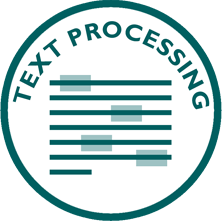Continuing our series of PostgreSQL Data Types today
we’re going to introduce the PostgreSQL text data type. The first notion to
understand when processing text in any program is of course the notion of
encoding.
So when addressing the text datatype we must mention encoding settings, and
possibly also issues. An encoding is a particular representation of
characters in bits and bytes. In the ASCII encoding the letter A is
encoded as the 7-bits byte 1000001, or 65 in decimal, or 41 in
hexadecimal. All those numbers are going to be written the same way on-disk,
and the letter A too.



